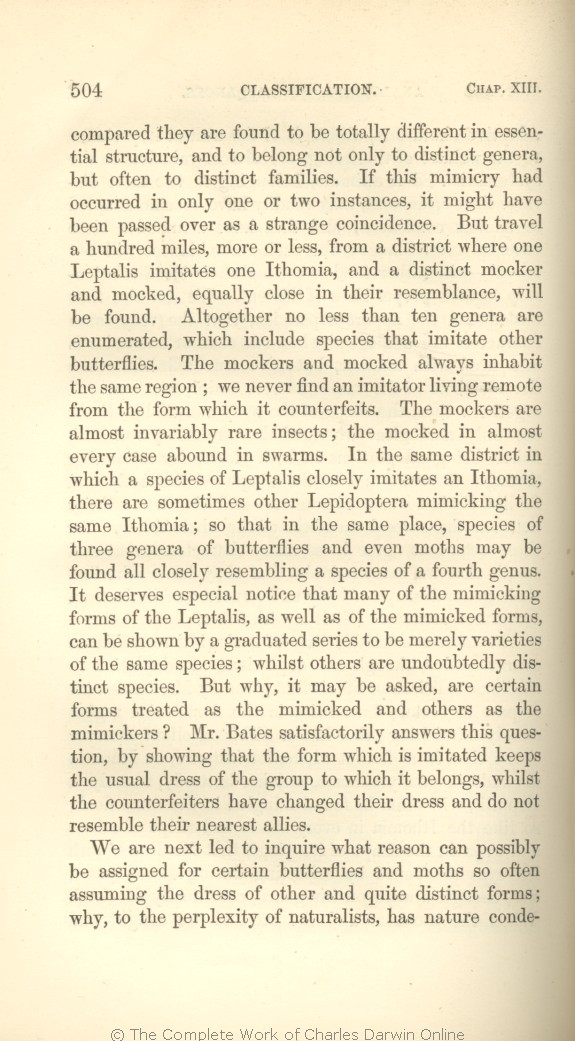compared | compared 1866 1869 | | compared, 1872 |
| totally 1866 1869 | | very 1872 |
| had occurred 1866 | | occurred 1869 1872 |
| travel a hundred miles, more or less, 1866 |
| if we proceed 1869 1872 |
| and a distinct mocker 1866 |
| another mocking 1869 1872 |
| mocked, 1866 | | mocked 1869 1872 |
| OMIT 1866 |
| species belonging to the same genera, 1869 |
| species belonging to the same two genera, 1872 |
| counterfeits. 1866 | | imitates. 1869 1872 |
| Ithomia; 1866 1869 | | Ithomia: 1872 |
| species of 1866 |
| butterfly belonging to 1869 1872 |
|
|
We are next led to inquire what reason can
possibly | possibly 1866 1869 | possibly 1872 |
| other 1866 | | another 1869 1872 |
| forms; 1866 | | form; 1869 1872 |
| conde- scended 1866 | | condescended 1869 1872 |
|









